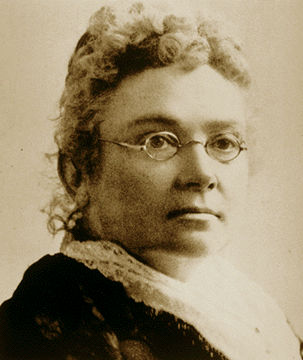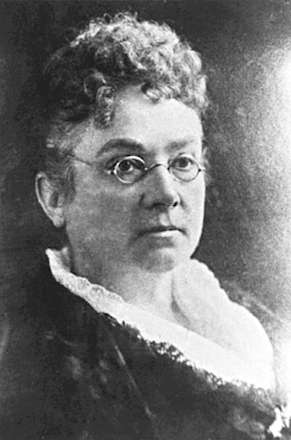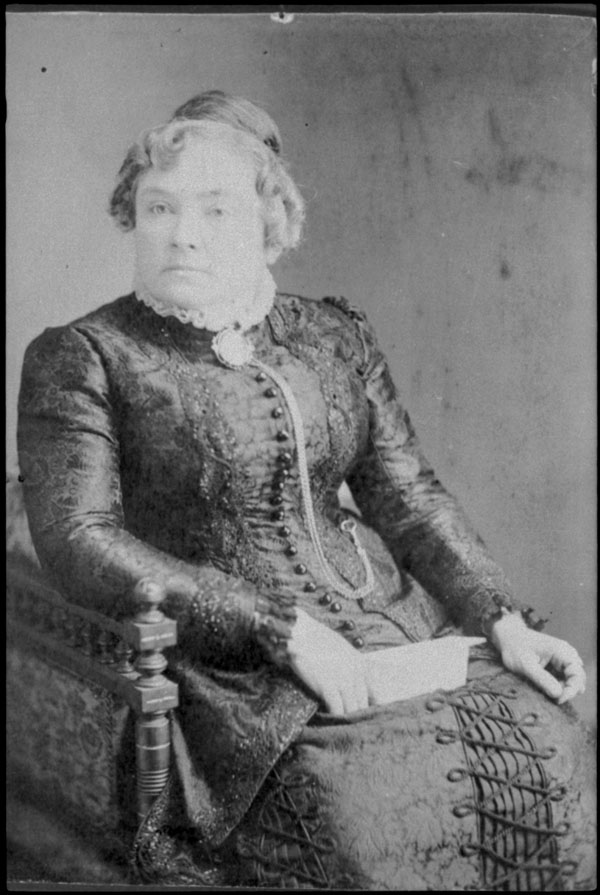Emily Howard Jennings Stowe, physician, teacher, school principal, suffragist (born 1 May 1831 in Norwich, Ontario; died 30 April 1903 in Toronto, Ontario). Stowe was a founder of the Canadian Women’s Suffrage Association. She is considered to be the first female physician to publicly practise medicine in Ontario. She was also the first female principal of a public school in Ontario.

Childhood and Early Life
Emily Howard Jennings was born on 1 May 1831 in Norwich Township, Ontario. Her mother, Hannah Lossing Howard, and her father, Solomon Jennings, were successful farmers. They came from well-established families who were members of the Quakers (The Religious Society of Friends) and were political and spiritual leaders in their community. Their community encouraged the education of women and women’s participation in Quaker meetings. Stowe’s mother was educated at a Quaker seminary in the United States. She home-schooled Stowe and her five sisters, instilling in them a love of learning. She also taught them skills in herbal healing. Their family friend, Joseph J. Lancaster, was a homeopathic physician. As a teenager and young adult, Stowe worked at times as an apprentice to Lancaster. Emily Stowe and her sisters also worked together on the family farm.
Early Career
In 1846, at the age of 15, Stowe began to work as a teacher in the town of Summerville, Ontario. She taught there for seven years. In 1852, Stowe applied to Victoria College in Cobourg, Ontario. She was not admitted because she was female. Stowe then applied to the Normal School for Upper Canada (Toronto), which was the only advanced school in Canada that accepted women. Stowe was accepted in 1853 and graduated in 1854 with first-class honours. After graduating, Stowe accepted a job with the Brantford school board and soon became the first female principal of a public school in Ontario. She worked as a principal in Brantford until 1856.

Central public school in Brantford, Ontario, where Emily Stowe was Canada’s first female school principal.
On 22 November 1856, she married John Stowe, who ran his family business, the Stowe Brothers Carriage Shop. They lived in Mount Pleasant, Ontario, a small village near Brantford, and had a daughter, Ann Augusta, and two sons. In 1863, John Stowe became sick with tuberculosis. His illness may have inspired Stowe to further study herbal healing and medicine. In 1863, Stowe took on a teaching position at the local grammar school and began to research places to study medicine.
Medical Career
Stowe applied to the Toronto School of Medicine in 1865 but was not accepted. At that time, women were not admitted to medical schools in Canada. Stowe left Canada to attend the New York Medical College for Women, which taught homeopathic medicine. While she attended medical school, her sister Cornelia Lossing helped to look after her children. Stowe received her degree in 1867.
Stowe returned to Canada in 1867 and opened a medical practice on Richmond Street in Toronto. She specialized in treating diseases of women and children. However, in the mid-1860s, the medical profession in Canada began requiring that homeopathic doctors and doctors trained in the United States take further courses and an examination in order to obtain their medical licences. In 1869, Stowe applied to take classes in chemistry and physiology at the University of Toronto to qualify for her licence. She was denied entry. In 1871, Stowe was finally admitted to the Toronto School of Medicine. Along with fellow female physician Jennie Trout, Stowe became one of the two first women to attend classes there. However, Stowe still did not receive her medical licence. There is no record that Stowe took the licensing exam required by the College of Physicians and Surgeons of Ontario. Stowe continued to practice medicine without a medical licence for over a decade.

Emily Stowe advertisement in The Globe, 11 November 1867.
In 1879, Stowe was involved in a criminal trial. One of her patients, nineteen-year-old Sarah Lovell, died mysteriously. Stowe was accused of trying to help Lovell have an abortion, which was against the law at that time. At the inquest, Stowe testified that she had given Lovell a drug that could cause a miscarriage, but that she had given only one thirtieth of the full dose. This amount was too small to cause a miscarriage. When Stowe testified at the inquest, she proved herself to be a knowledgeable and skilled medical practitioner. The coroner’s jury determined that Lovell had poisoned herself. Still, Stowe was charged with the criminal act of administering drugs to cause an abortion. After a short trial, Stowe was ultimately acquitted. Stowe gained fame and public support during the trial.
Soon after the trial, on 16 July 1880, Stowe received her medical licence from the College of Physicians and Surgeons of Ontario. Rather than writing her exam, she was admitted on the basis of her credentials and her earlier medical work as an apprentice to Dr. Joseph J. Lancaster.
Suffrage
Throughout her medical career, Stowe fought for equality between men and women. She believed that women deserved the opportunity to earn the same credentials as men, whether in medicine, law or any other area of study. Stowe helped to create the Toronto Women’s Literary Club (TWLC) in 1876–77. The TWLC was concerned with improving women’s access to higher education and with improving the working conditions and rights of female workers. Over time, the TWLC began to publicly support women’s right to vote and their right to own property. In 1883, the TWLC changed its name to the Canadian Women’s Suffrage Association (CWSA). Stowe was a vice-president. In 1889, Stowe helped create a nationwide organization devoted to female suffrage called the Dominion Women’s Enfranchisement Association (DWEA). Stowe was the principal founder and first president of the DWEA. In her position, Stowe used various strategies to influence political change: lobbying, petitions, rallies, speeches, and newspaper editorials.

Emily Howard Jennings Stowe, physician, teacher, school principal, suffragist (1831–1903).
Education for Women
Stowe worked tirelessly to promote higher education for women. She pressured the University of Toronto to change their policies around accepting female students into medical school. In 1883, Stowe’s daughter, Ann Augusta Stowe-Gullen, earned a medical degree from the University of Toronto. Stowe-Gullen was the first female to graduate from a Canadian medical school. However, Stowe-Gullen’s success did not immediately pave the way for female medical students. Even after she graduated, the University of Toronto continued to turn away female medical students.
Inspired by her difficulty in accessing education, Stowe helped to create the first medical school for women in Canada. In 1883, she led a public meeting of the Canadian Women’s Suffrage Association about the need for equal education for women. This led to the creation of Woman’s Medical College, which opened in 1883 in Toronto. Dr. Michael Barrett was the first dean. In 1895, the school changed its name to the Ontario Medical College for Women. In 1898, the college opened The Dispensary, a practice clinic for students at the medical college. The Dispensary offered free medical advice and services for patients, whether or not they could afford to pay.
Legacy
Stowe died on 30 April 1903 in Toronto. While the Ontario Medical College for Women closed in 1905, its Dispensary inspired the creation of a hospital run by women for women. In 1909, a group called the Women’s College Hospital Committee campaigned for a female-run hospital. The Dispensary was renamed Women’s College Hospital and Dispensary in 1913. The original hospital had seven beds but grew larger over the years and continues to operate. As a prominent teaching hospital affiliated with the University of Toronto, Women’s College Hospital continues to promote health equity and innovations in the health care system.
There are two elementary schools named after Stowe, Emily Stowe Public School in Norwich, Ontario and Dr. Emily Stowe Public School in Courtice, Ontario. In 2018, Stowe was inducted into the Canadian Medical Hall of Fame.

Dr. Emily Stowe, later in life.

 Share on Facebook
Share on Facebook Share on X
Share on X Share by Email
Share by Email Share on Google Classroom
Share on Google Classroom

